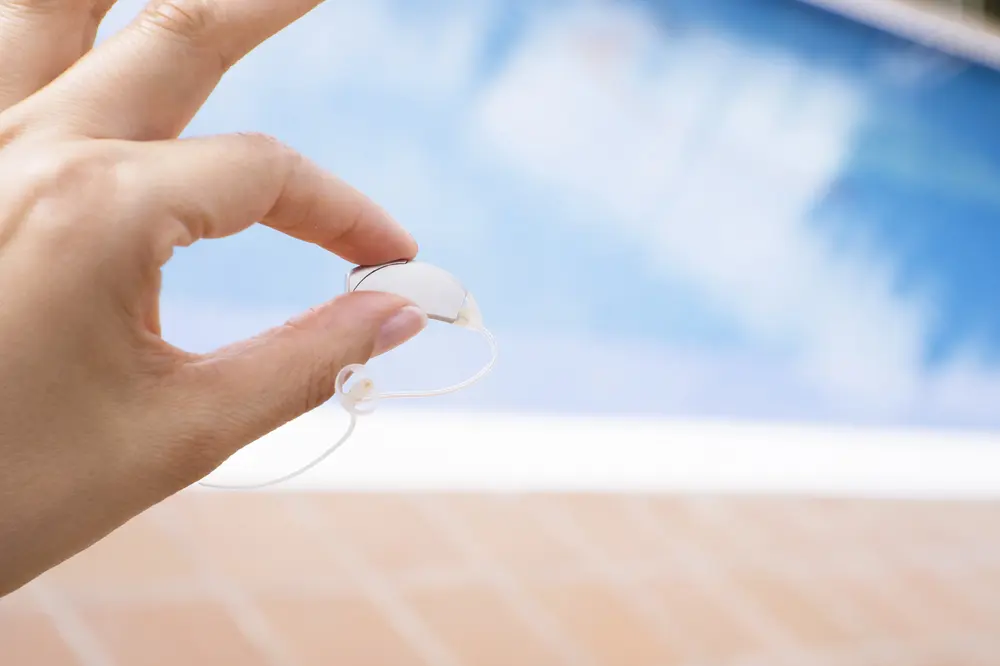Modern hearing aids are very different from the small devices most people remember from decades ago. Today, they’re high-tech units equipped with processors, sensors, Bluetooth connectivity, and even AI-powered features. These devices are designed to support a full lifestyle, which for many Canadians includes beach vacations, swimming in pools, and spending time near lakes and rivers. So it’s no surprise that many users in Canada and around the world ask a logical question: Can you get a hearing aid wet, and are there models that are fully waterproof? Since hearing aids are not cheap, no one wants to keep replacing them after every swim — regular moisture exposure is one of the most common reasons people later turn to hearing aid repair Calgary specialists.
Waterproof or water-resistant – what’s the difference?
Before getting into the technology, it’s important to understand the difference between two terms:
Water-resistant — the device can handle limited exposure to moisture such as sweat, rain, or accidental splashes.
Waterproof — in theory, the device can be submerged to a certain depth for a specific time without damage.
Most hearing aids available on the Canadian market fall into the water-resistant category. Truly waterproof models are extremely rare, and even those have strict limits on how deep and how long they can stay in water.
What do IP ratings mean?
Manufacturers often list an IP rating — an international protection standard. For example, the IP68 label is one of the highest. The first digit shows resistance to dust and solid particles (6 is the maximum level), and the second digit shows water protection (8 means short-term submersion is allowed).
Some modern models from well-known brands like Phonak, Oticon, Widex, and Signia already have this rating. But it’s crucial to understand that IP68 doesn’t mean you can swim laps in a pool or take daily showers without removing your device. It only guarantees that accidental moisture exposure won’t disable it.
Moisture — the main enemy of electronics
Even in Canada, where winter air can be very dry, the moisture issue remains relevant. For example:
- In spring and fall, higher humidity can affect internal components.
- In winter, hearing aids face sudden temperature changes — from outside to warm indoor environments.
- Physical activity, especially in gyms or outdoors, leads to sweating, and sweat contains salt.
- Living in coastal regions, especially along Canada’s Atlantic shoreline, increases exposure to condensation.
Condensation, sweat, and temperature fluctuations can cause corrosion and interfere with microphone performance.
Can you swim with a hearing aid?
As of today, swimming with a regular hearing aid is not recommended. Even if the device has a high IP rating, manufacturers point out that testing is done in clean water under lab conditions — not in chlorinated pool water or salty ocean water. Chemicals and salt are far more aggressive than fresh water.
If someone swims regularly or attends pools often, audiologists suggest:
- Using secure headbands or clips to prevent the device from falling off.
- Removing the device before going into water unless it’s certified as swimproof.
- Drying the skin and ear area carefully after activity to remove any remaining moisture.
Are there hearing aids you can actually swim with?
Some models are now marketed toward active lifestyles. For example, the Phonak Audeo Life is promoted as being able to handle rain, sweat, and even accidental drops into water. However, even for this model, the manufacturer does not recommend extended swimming.
There are also accessory solutions — such as silicone waterproof covers — that can temporarily protect the device, but they reduce sound quality and are not meant for constant use.
How to protect your hearing aid from moisture in daily life
For Canadians, especially active users, simple but effective steps are recommended:
- Use drying containers — either disposable drying capsules or electric drying boxes, available at pharmacies and hearing clinics.
- Wipe the device with a soft cloth after being outdoors or after a workout.
- Avoid storing the hearing aid in the bathroom where humidity levels are high.
- Get the device serviced regularly before peak activity seasons — summer or winter.
Final takeaway: can hearing aids be considered waterproof?
Most hearing aids are moisture-resistant but not designed for prolonged water exposure. They can handle sweat, rain, and accidental splashes but are not intended for swimming or showering. There are rare exceptions, but even those require caution.
Manufacturers are working to make devices as durable as possible, but the main recommendation remains the same: the less water exposure, the longer the hearing aid will last without repairs. This is especially important in Canada, where both the climate and lifestyle introduce many moisture-related challenges.
